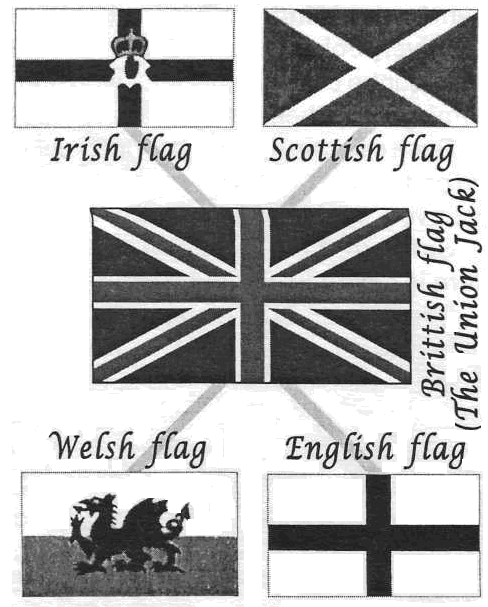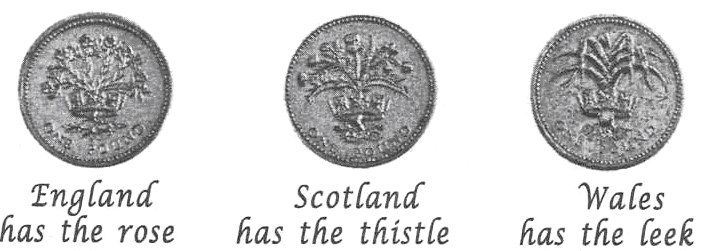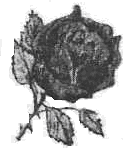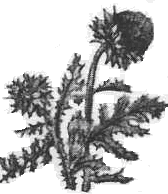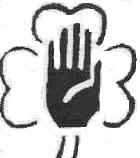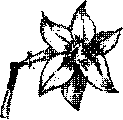
- •Посібник з англійської мови (за професійним спрямуванням. Перехідно-підготовчий етап) Завдання для практичних занять
- •Пояснювальна записка
- •1. Read and memorize the following words and expressions.
- •2. Norms of address.
- •3. Learn the following phrases.
- •4. Make up sentences.
- •1. Look at the table below and answer the question: What country has the same capital as Great Britain in the whole? the united kingdom of great britain and northern ireland (the uk)
- •2. Read and translate the text, then answer the questions to the text. The United Kingdom of Great Britain and Northern Ireland
- •Questions
- •3. Read and translate the dialogue.
- •4. In his last letter Oleksiy asked Claud about the national symbols and holidays of the
- •5. Make the following sentences complete according to the information you've learned from Claud's letter.
- •6. Do you remember the Ukrainian and the American national flags? Describe them and draw them in your notebooks.
- •7. Now you have learnt some more facts about the uk. Can you answer the questions?
- •8. Read the dialogue and say why Helen is much interested in the English language.
- •9. It’s interesting to know.
- •10. The British National Anthem.
- •12. Copy the sentences and fill in the prepositions.
- •1 3. Maxym visited Great Britain and liked it very much He says that English people are fond of traditions. Read some notes from his diary.
- •14. The questions Answer.
- •15. Translate into English.
- •16. Translate into English.
- •17. Imagine you've been to gb and are going to make a report about your trip. Get ready to do that in a written form.
- •18. Read and learn to pronounce correctly.
- •19. Rеad the text. The history of the english language
- •20. Match two parts of the sentences according to the text.
- •21. Read and translate the text. London
- •Questions
- •22. Match the words, word-combinations with their translation.
- •23. Read and translate the dialogue.
- •24. A) Read the following text and practise it.
- •25. Read the dialogue. Places of interest in london
- •26. Ask your groupmate.
- •27. Translate the words given in brackets into English.
- •28. Agree or disagree. Give your reasons.
- •29. Translate into English. Визначні місця лондона
- •30. Test yourself and do the following quiz. London quiz
- •3 1. "All About Britain"
- •Variant I
- •I. Fill in the blanks with the words from the box.
- •II. Fill in the blanks with the correct words.
- •III. Put the words in the correct order to make up sentences.
- •Variant II
- •I. Fill in the blanks with the words from the box.
- •II. Fill in the blanks with the correct words.
- •III. Put the words in the correct order to make up sentences.
- •1. Read about one of the Ukrainian patriots. Consult the dictionary if necessary.
- •2. Choose the right word or word combination and complete the following sentences according to the text above.
- •3. Read the new words and remember how to use them.
- •4. Read and translate the text. Ukraine
- •Questions
- •5. Read and translate the dialogue.
- •6. Use the English equivalents to complete the sentences.
- •7. Use the information below to complete the text. Write a description of Sweden, India.
- •8. Speak about the geographical position of Ukraine. Use the map and point out the border lines, the bordering countries, seas, rivers, mountains. Speak about its climate and nature.
- •9. Read and learn the meaning of the words and word combinations.
- •10. Read the following text and find the words from exercise 9 in it. Copy these sentences in your notebooks. The capital of ukraine
- •15. Speak on the following.
- •Write an article about your native town or city where you live in. Describe its places of interest. Some Facts from the History of Ukraine
- •17. Read the new words and guess the meanings with the help of the following sentences.
- •18. Read and translate the article. Consult the vocabulary if necessary. Who were our ancestors?
- •19. Choose the right answer to the following questions.
- •20. Read the text below and answer the question in the title. Where do the names of ukrainian towns and cities come from?
- •21. Read and translate the text. Who were the cossacks?
- •22. Complete the sentences according to the text above.
- •23. Read the following text. Put 5 types of questions to it. Outstanding people of ukraine
- •24. Translate into English.
- •26. Do the quiz.
- •27. Are you able to take part in the following task? « All About Ukraine»
- •28. Make up sentences about the geographical position using the table.
- •29. Read and translate the text. Relations of ukraine with english-speaking countries
- •30. Read and translate the dialogue.
- •Questions
- •31. Read and translate the text. Ukrainian-british relations
- •32. Give the Ukrainian equivalents to the following.
- •33. Ask your friend all possible questions to the following sentences model.
- •34. Say it in English.
- •Variant I
- •I. Fill in the blanks with necessary words: producing, situated, occupies, proclaimed, sovereign, inhabited.
- •II. Distribute the following words according to their category. Put the numbers of the words from the box into the lines (a, b, c, d).
- •III. Fill in the blanks in the sentences and complete the crossword.
- •Variant II
- •I. Fill in the blanks with necessary words: Europe, country, position, Parliament, river, deposits, longest, independence.
- •II. Distribute the following words according to their category. Put the numbers of the words from the box into the lines (a, b, c, d).
- •III. Fill in the blanks in the sentences and complete the crossword.
- •Test 2 Ukraine
- •Use the map to complete the text
- •Text 1. The Political System of Ukraine
- •Text 2. Constitution of Ukraine
- •Text 3. The Political System of the United Kingdom of Great Britain and Northern Ireland
- •Text 4. The national symbols of Ukraine
- •Text 5. Lviv
- •Text 6. Dnipropetrovsk (Fill in prepositions)
- •Text 7. Glasgow
- •Література:
Questions
Is the United Kingdom a European country?
What does Great Britain border on?
What are the longest rivers of Great Britain?
The United Kingdom consists of 4 countries, doesn't it?
Is the English Channel also called La Manche?
Where is Great Britain situated?
What is the population of the UK?
What territory does Great Britain occupy?
What is the capital of the UK?
What is the political system of Great Britain?
3. Read and translate the dialogue.
- Well, Natasha ... What country is situated in the north-west of Europe on the British Isles?
- Of course, it is the UK, the island country separated from the French coast by the English Channel.
- Do you know the other names of the English Channel?
- Well, let me see. La Manche or Strait of Dover .
- Exactly. What countries does Great Britain border on?
- Oh, I am fond of Geography since my childhood. I know it. Great Britain borders on Northern Ireland and France.
- That's right. And how is the flag of the UK called?
- The Union Jack. It is made up of three crosses.
- I am sure you know what the Welsh Flag looks like, don't you?
- It represents a red dragon on a white and green background.
- Very well. And what about the population of the UK?
- The population is 57 million.
- Quite right. The capital of Great Britain is London, isn't it?
- Yes, London is the capital of England, Wales has Cardiff, Scotland has Edinburgh and the main city of Northern Ireland is Belfast.
- You are quite right.
4. In his last letter Oleksiy asked Claud about the national symbols and holidays of the
British people. Here is some information from Claud's reply.
Dear Oleksiy,
Thanks a lot for your letter. It was very interesting for me and my parents to learn about the history of your country. Now I see that Ukraine has gone a long and difficult way.
To my mind, your people have to work hard to get the real independence and better life. I hope your letter will help me to get ready for a School Conference of young Historians that is going to be next week.
|
Now a few words about the national symbols and holidays of my country. First of all, it is our flag. We call it the Union Jack. It is made up of three crosses: the cross of St. George (the patron saint of England), the cross of St. Andrew (the patron saint of Scotland) and the cross of St. Patrick (the patron saint of Ireland). It is red, white and blue. Each country has its own colour: England - white, Scotland - blue, Wales - red. These are used, for example, for football or rugby teams. These colours come from the national flags. The English flag is white with a red cross. The Scottish flag has a white cross on a blue background. The Welsh flag shows a red dragon. |
Then there are emblems of Britain.
They are plants, you can see them on pound coins.
|
Our people are proud of their traditions and carefully keep them up. But when we speak about British traditions we must remember that there are four parts in Britain. Traditions are different in them. |
|
|
St. George's Day falls on April 23 and is celebrated as an England’s national day. On this day some patriotic Englishmen wear a rose pinned to their jackets. A red rose is the national emblem of England from the time of the Wars of the Roses (the 15th century). |
|
|
St. Andrew's Day (November 30) is a Scotland’s national day. On this day some Scots wear a thistle in their buttonhole. As a national emblem of Scotland, thistle first was used in the 15th century as a symbol of defence. The Order of the Thistle is one of the highest orders of knighthood. It was founded in 1687. |
|
|
St. Patrick’s Day (March 17) is considered to be a national day in Northern Ireland and an official bank holiday there. The national emblem of Ireland is a shamrock. According to a legend, it was the plant chosen by St. Patrick to illustrate the idea of Christianity of the Trinity to the Irish. |
|
|
St. David's Day (March 1) is the church festival of St. David, a 6th-century monk and bishop, the patron saint of Wales. The day is regarded as the national holiday of Wales. |
|
They are only some facts about our national symbols and holidays. By the way, it's interesting to know what national emblems and colours your country has. Do different parts of Ukraine have their own emblems, flags and colours, too? Can you write about the origin of the symbols and colours of your country for me? Write and tell me as soon as you can.
Good luck with your English study.
Truly yours, Claud.

